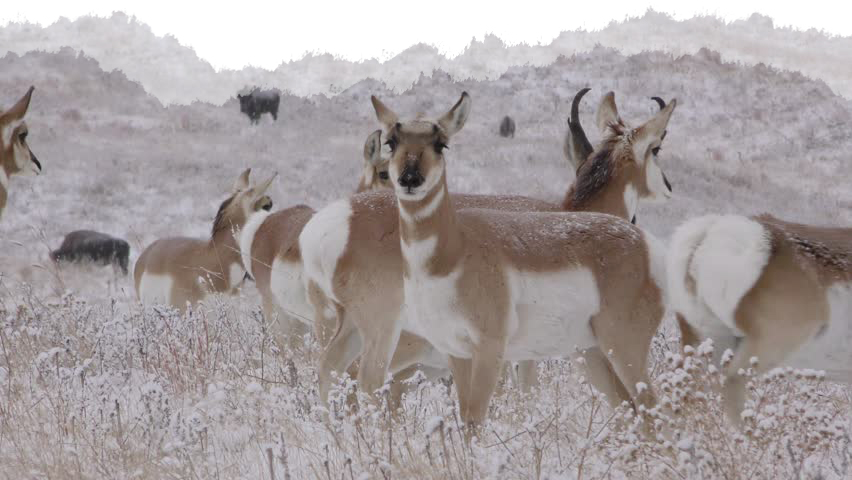What is the second fastest mammal in the world?
Pronghorn Antelopes are renowned far and wide for their speed and distances traveled through extensive seasonal migrations; being the second fastest mammal in the world with the capability of steadily maintaining close to 60 mph and migrating a total 300 miles every year, pronghorns demonstrate both astounding endurance and phenomenal physical characteristics. Pronghorns are closely related to goats and antelopes. And they are native as well as solely found within North America, inhabiting the following states: Arizona, California, Colorado, Montana, Nevada, New Mexico, Oregon, Utah, and Wyoming. Pronghorns prefer open plains and grasslands; the greatest numbers being found within Yellowstone and the Red Desert of Wyoming, with herd sizes of up to 400 pronghorns.

How to recognize and understand the Pronghorn Antelope.
The outward appearance of the pronghorn is an additional notable characteristic in and of itself as well; the pronghorn’s name is derived from their horns that have a notch, which creates a sort of prong shape. Male and female pronghorns both have horns, though the males’ horns measure up to a foot tall, whereas the females’ horns are only mere bumps in comparison. Pronghorn antelope average about 4 ½ feet in length, 3 feet in height, and a weight of 90 to 150 pounds with the males weighing more than the females; though they resemble deer, they are much smaller. Moreover, they have an intricate fur pattern consisting of a tan/reddish top fur coat with white lining around the throat and face, as well as broad white patches along the stomach and the rump. The white rump of the pronghorn is made up of longer white hairs that will stand up when the pronghorn is alarmed; this attribute serves as a silent warning sign when other pronghorns are around to notice. With large eyes that offer 300-degree vision, pronghorns will notice the white hairs stand on a member of the herd and instantly know that a predator or impending threat is lurking; the rump warning heightens the chances of the pronghorn’s escape.

Why do Pronghorn Antelope migrate such far distances?
In addition, pronghorns are herbivores with a diet consisting of grasses, from which they get the majority of their water intake from after digesting their food twice. Their migrations are propelled through obtaining a viable food source throughout the year; therefore, where the herd of pronghorns resides, determines the distance of their migration when winter comes. The elected region of the pronghorn also defines when mating season takes place – either in the late summer or fall months. Males are naturally aggressive when defending what has been marked as their mating grounds, where they will defend the females from other male pronghorns, with the intention of mating with numerous females within that territory. The female pronghorns typically give birth to 1 or 2 fawns in the springtime; the fawns will spend their first year with their mother and then become self-sufficient thereafter. Pronghorn antelopes have an average lifespan of 10 years, with common threats being coyotes, wolves, bobcats, and automobiles. These land rovers with the ability to maintain their top speed for a longer duration than a cheetah, the fastest mammal on Earth, allot the pronghorn an impressive and remarkable world-wide reputation.

